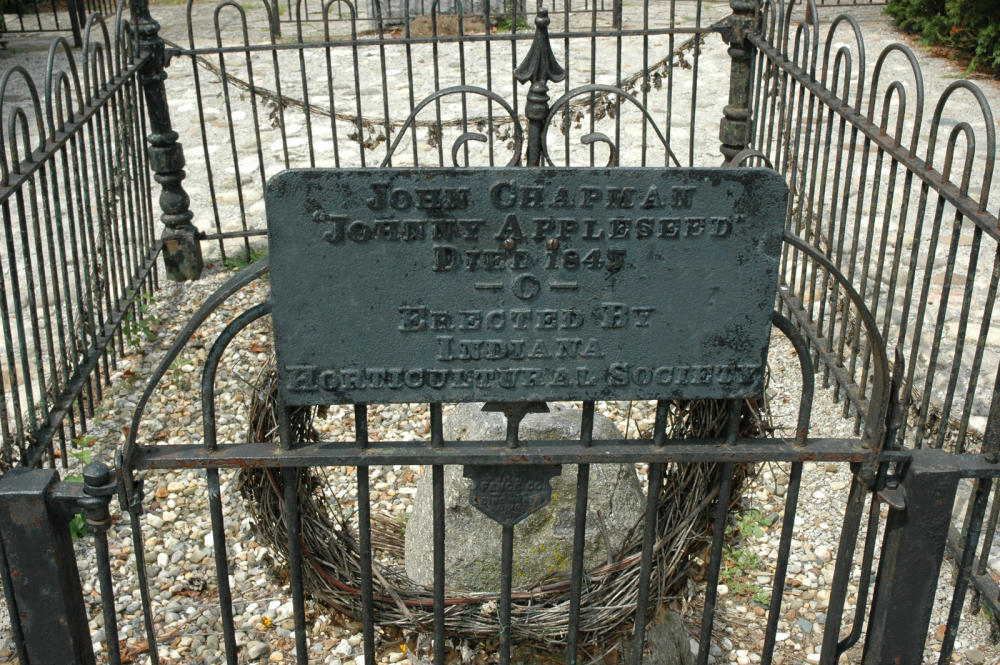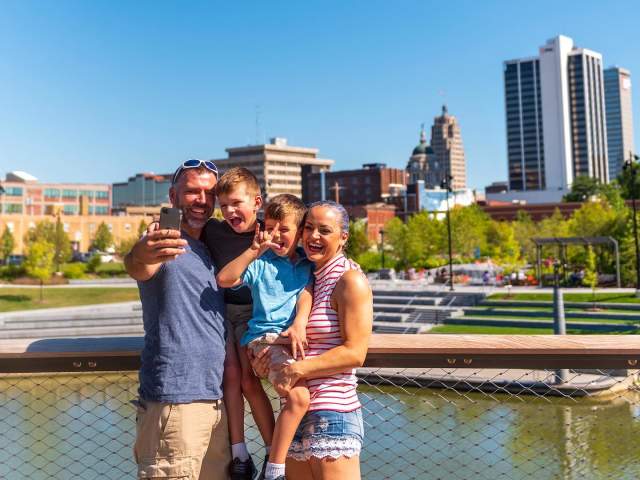Johnny Appleseed is a major cultural icon here in Fort Wayne. From the TinCaps baseball team to the epic Johnny Appleseed Festival every September, the man who planted apple trees and walked through much of Ohio and Indiana has left a legacy here that many like to recall.
The Life of Johnny Appleseed
Born in September of 1774, John Chapman (i.e. Johnny Appleseed) was born to parents Nathaniel and Elizabeth Simonds Chapman in Leominster, Massachusetts. His family included one older sister, Elizabeth. His mother died in 1776, while father Nathaniel Chapman was in active military service during the Revolutionary War.
In 1880, Nathaniel married Lucy Cooley, also of Massachusetts. Sources disagree on whether or not John and his older sister went to live with their father and step-mother. However, John Chapman did become interested in growing apple trees.
Why Apple Trees?
According to Steven Fortriede’s pamphlet, Johnny Appleseed: The Man Behind the Myth, “Apples were the easiest of all fruits to get into production and were also the easiest to store for year-round use, without the addition of expensive sugar.”
Johnny Appleseed Legacy in Fort Wayne
John Chapman became a fairly permanent fixture in Allen County in 1834, when he purchased two pieces of land on the Maumee River, east of Fort Wayne. Chapman was to own five different sections of land in Indiana. One of his Maumee River properties was turned into a tree nursery with 15,000 trees planted on the 42-acre tract. His brother-in-law, William Broom, (married to Percis Chapman, John’s half-sister), also cleared approximately fifteen acres of Chapman’s Indiana property and built a barn.
In 1845, around the age of 70, John Chapman died. His grave site was disputed for a number of years, and its exact location is still a subject of some mystery. However, his legacy as a pioneer and fruit grower is still very much alive today – especially in the apple trees that he helped plant in the Midwest.
A Rambo Apple tree, a descendant of the apple trees Chapman grew near Nova, Ohio, was recently planted next to the Old Fort here in Fort Wayne.
 Cuttings (small pieces) of the original tree were grafted onto different root stock (already growing trees). According to the Old Fort Palisade newsletter, these grafted trees were planted throughout the Fort Wayne area years ago – two of them still growing at the Johnny Appleseed memorial gravesite.
Cuttings (small pieces) of the original tree were grafted onto different root stock (already growing trees). According to the Old Fort Palisade newsletter, these grafted trees were planted throughout the Fort Wayne area years ago – two of them still growing at the Johnny Appleseed memorial gravesite.
Fort Wayne gardener Carsten Retrum raised a grafted Johnny Appleseed Rambo Apple tree at his home. In December of 2016, he donated the tree to the Old Fort. It will serve as a symbolic memento of the legacy Johnny Appleseed has in this area.
 The tree, which is around 20 years old, will produce Rambo apples. While these are not sweet apples, this variety is used for making apple cider and will produce tart (sour) apples.
The tree, which is around 20 years old, will produce Rambo apples. While these are not sweet apples, this variety is used for making apple cider and will produce tart (sour) apples.
Old Fort Gardener Rick Ritter said in a News-Sentinel article that he hopes to eventually turn the Old Fort Rambo apples into cider. It’s a fitting way to remember the legacy Johnny Appleseed left to the people of Fort Wayne.

Fort Wayne Apple Trail
Fall is synonymous with apples in Fort Wayne, Indiana. Grab your family and get ready to eat, discover, and explore the Fort Wayne Apple Trail.
Get the free pass today!
Information for this article was found in the following sources:
“Johnny Appleseed Rambo Tree” The Old Fort Palisade, Winter 2017 (newsletter)
Johnny Appleseed: the Man Behind the Myth by Steven Fortriede
“Apple Tree with Possible Link to Johnny Appleseed to be Planted at Old Fort” by Kevin Kilbane of the Fort Wayne News-Sentinel
The Swedenborg Church of North America – Famous Swedenborgians










